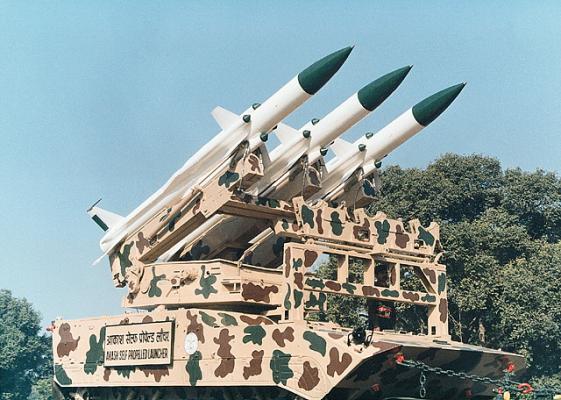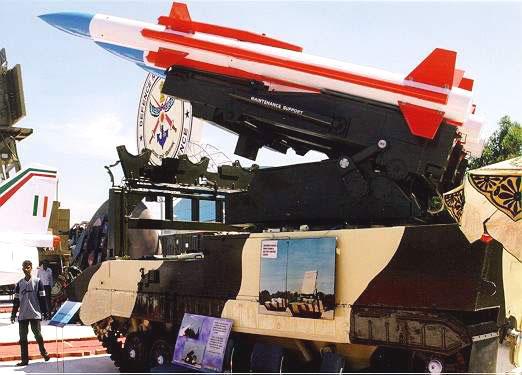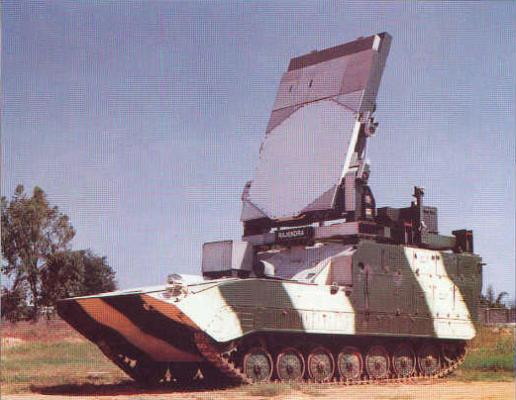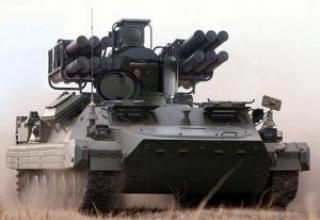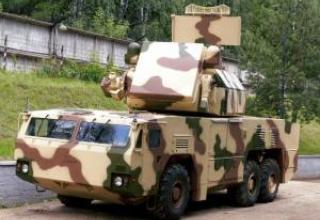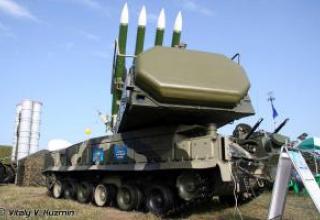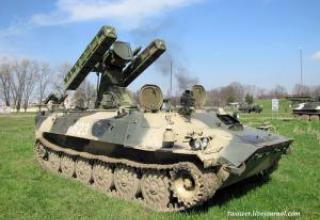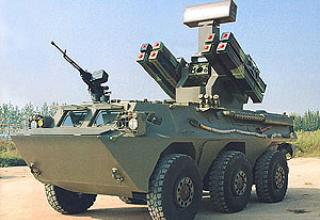India's military and political leadership has been consistently implementing a comprehensive guided missile program, despite its high cost and the negative reaction of several states. The strategic goal of the programme is to build and develop its own research and production base, which could provide the country's armed forces with sufficiently effective missile weapons.
At the request of the national air force, the full-scale development of the Akash medium-range anti-aircraft missile system (SAM) is being completed. It is designed to defeat aerodynamic air targets, maneuvering with overloads up to 8 units, in the conditions of active use by the enemy of electronic suppression means. The complex provides air defense of objects and groups of troops.
Works on creation of SAM system "Akash" are conducted since 1983 by firms "Bharat Dynamics Limited" and "Tata Electronics". Its testing began in 1990.
At present time research and development are carried out for further modernization of the complex. The main purpose of these works is to enable the complex to intercept operational-tactical and tactical missiles. In this connection, it is planned to increase the range of SAM up to 60 km by developing a new marching engine, to additionally equip it with an infrared homing head and to improve the performance of the Rajendra radar for more efficient target detection and tracking. In addition, work is under way to create a ship version of the SAM system "Akash".
Composition:
The complex consists of:
- The Akash launcher with three anti-aircraft guided missiles (SAMs),
- Rajendra multifunction radar with phased array antenna,
- control station
- auxiliary equipment.
All SAM elements are placed on the modified BMP-2 chassis.
The appearance and design of the air defense guided missile "Akash" is similar to that of the Russian medium-range missile "Cube". It is made according to the "rotary wing" scheme. Four aerodynamic surfaces, located in the middle part of the missile, perform the functions of the wing and rudder. Driven by pneumatic actuators, they are designed to control the SAM on the pitch and course. In the tail of the rocket is a stabilizer with ailerons, which are used to turn it on a roll. The solid propellant accelerator ensures acceleration of the SAM to a speed of about 500 m/s in 4.5 seconds, then the rocket direct drive (RPM) is activated, doubling it in 30 seconds. The RPM gas generator operates on solid fuel, which includes cellulose nitrate, nitroglycerine and magnesium powder. As an oxidizer, atmospheric oxygen is used. The air intake of the RPM is located in the middle part of the missile between the wing planes.
The SAM is equipped with a shrapnel-flag warhead (weighing about 60 kg) with a shrapnel flying range of about 20 meters. It is detonated by an impulse Doppler radio or contact fuse. The power source of the ZUR is a thermochemical battery. Its operating time is about 2 seconds and its warranty period is ten years.
In the "Akash" complex it is planned to implement a combined control of SAM: command on the initial and middle sections of its flight path and semi-active radar on the final (3-4 s before the meeting with the target). The missile is equipped with a guidance command receiver and a responder. The antennas of these devices are placed on the stabilizer.
Self-propelled launcher (SAM) provides transportation, storage and launch of "Akash" missiles. It consists of a base and a pivoting part with three rail-type guides. The PU base accommodates vertical and horizontal guidance mechanisms, electrical equipment, as well as control equipment for preparation and launch of SAMs. In order to reduce the weight, the main structural elements of the unit are made of aluminium alloy, and to compensate the unbalance of its oscillating part at various elevation angles, a torsion-type balancing mechanism is used. PU power supply is provided by an autonomous gas turbine unit, which generates three-phase alternating current with frequency 400 Hz (voltage 200 and 115 V). To guide the unit in the vertical (8 - 60 °) and horizontal (360 °) plane is used electric power tracking drive, which provides synchronous rotation of the guides from the RSD in the direction of the target. The PU is equipped with navigation, topohesizing and orientation equipment, which has a receiver of the NAVSTAR space radio navigation system. The equipment was developed with the assistance of American specialists and is manufactured at an Indian plant.
The multifunctional radar station "Rajendra" ("Rajendra") provides search and capture for automatic tracking of aerodynamic targets at ranges up to 60 km, identification of their nationality and pointing to four of them up to 12 SAMs under conditions of intensive radio interaction. The radar has a built-in system for monitoring the functioning and identifying faults. The station operation is controlled by a digital high-performance complex located at the control point. The radar antenna system consists of three antenna grids and beam control equipment. The main receiving and transmitting antenna contains 4,000 elements and operates in the G/H-band (4-8 GHz). A 1,000-element array operating in the M-band (8-20 GHz) is used to transmit pointing commands to the ZUR. The 16-element antenna is used for radar identification of the nationality "its own - alien".
The control centre coordinates the work of all SAM elements. It collects and processes information from Rajendra radars and self-propelled launchers, tying tracks and escorts up to 64 targets simultaneously, assesses their threat level, develops data for firing and controlling the missile. The combat operation process is automated to the maximum extent possible due to the use of a fast digital computer system, combined with the workstations of the commander and operators. The control room can operate in stand-alone or centralized mode (from a higher control room).
The fire unit of the SAM is a battery with four launchers, a multifunction radar "Rajendra" and a control station. It can be part of a division or used independently. A division is the main tactical unit of the complex, which includes up to eight fire batteries, a three-axis target detection radar and a command post equipped with automation and communication facilities. When used autonomously, the firing battery will be additionally equipped with a two-axis air surveillance radar.
Characteristics:
| Range of fire maximum, km | 27 |
| Range of fire is minimal, km | 3 |
| Height of target hit maximum, km | 15 |
| Target kill altitude minimum, km | 30 |
| Maximum target speed, m/s | 700 |
| Number of simultaneously fired targets | 4 |
| The reaction time, s | 15 |
| Missile launch weight, kg | 700 |
Testing:
Despite the declared high effectiveness of HARM missiles of early modifications can not be considered a modern high-precision weapon because they do not have a full-fledged recognition system "insider". Thus, for example, during Operation Desert Storm, the U.S. Air Force could not always effectively use HARM missiles because the Iraqi air defense facilities, along with Soviet-made systems (against which the use of this type of missiles is calculated) included American Hawk systems.
Sources:
- AKASH SAM /http://www.bharat-rakshak.com
- В.Панов. Индийский зенитный ракетный комплекс "АКАШ". Зарубежное военное обозрение , 2001 г.
